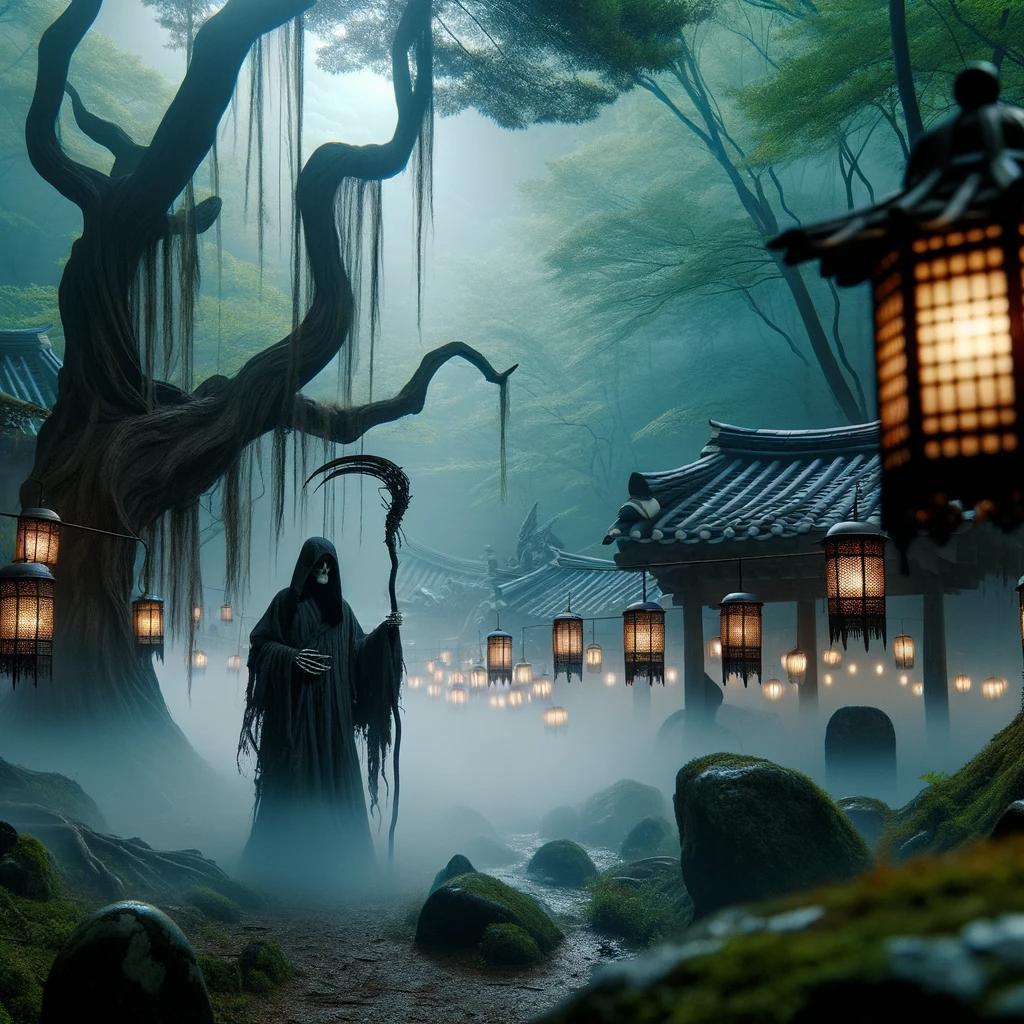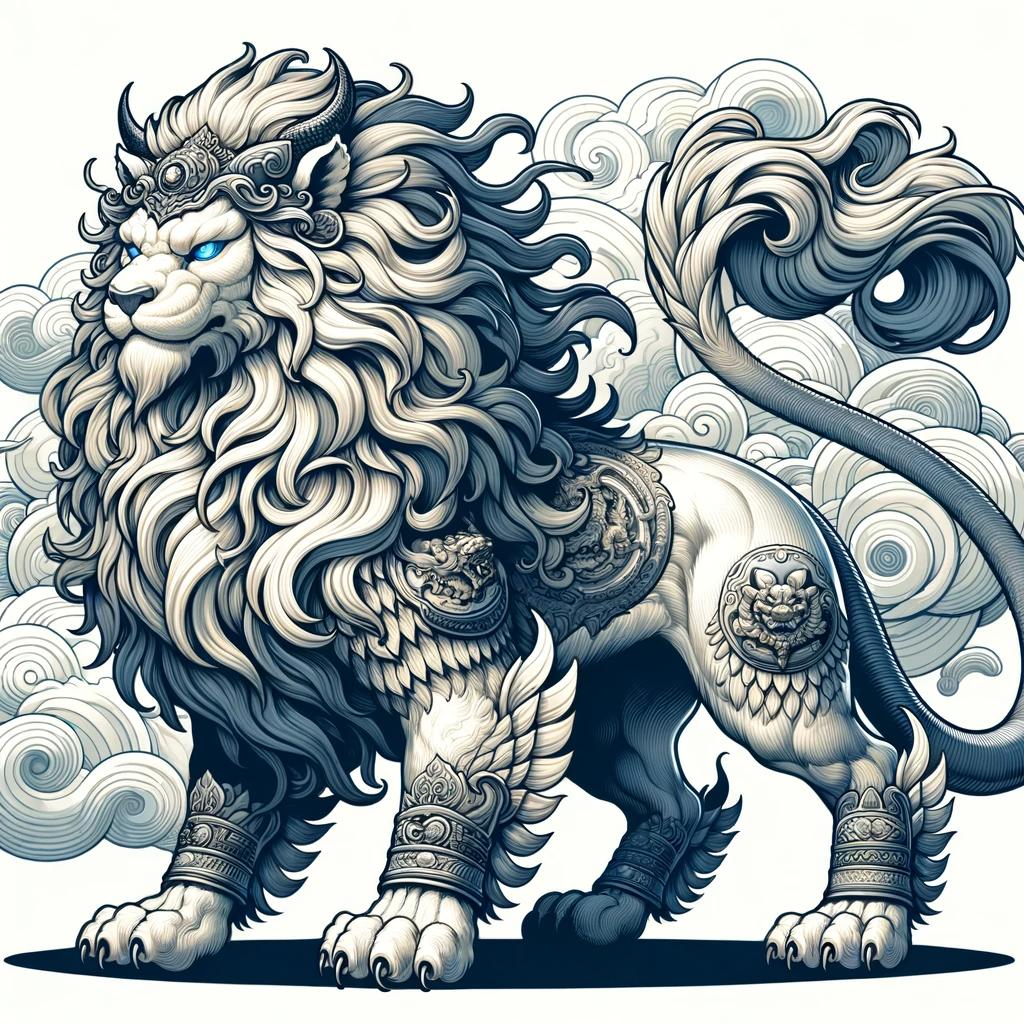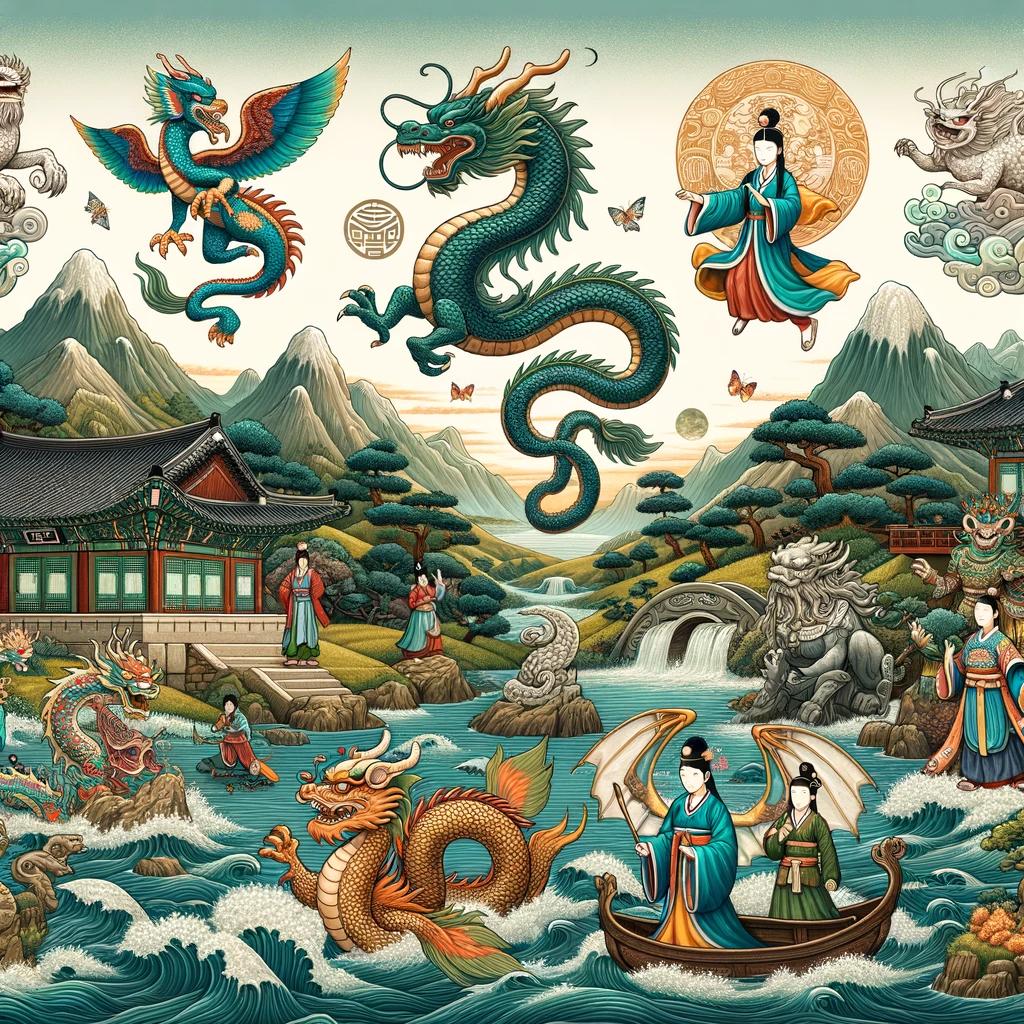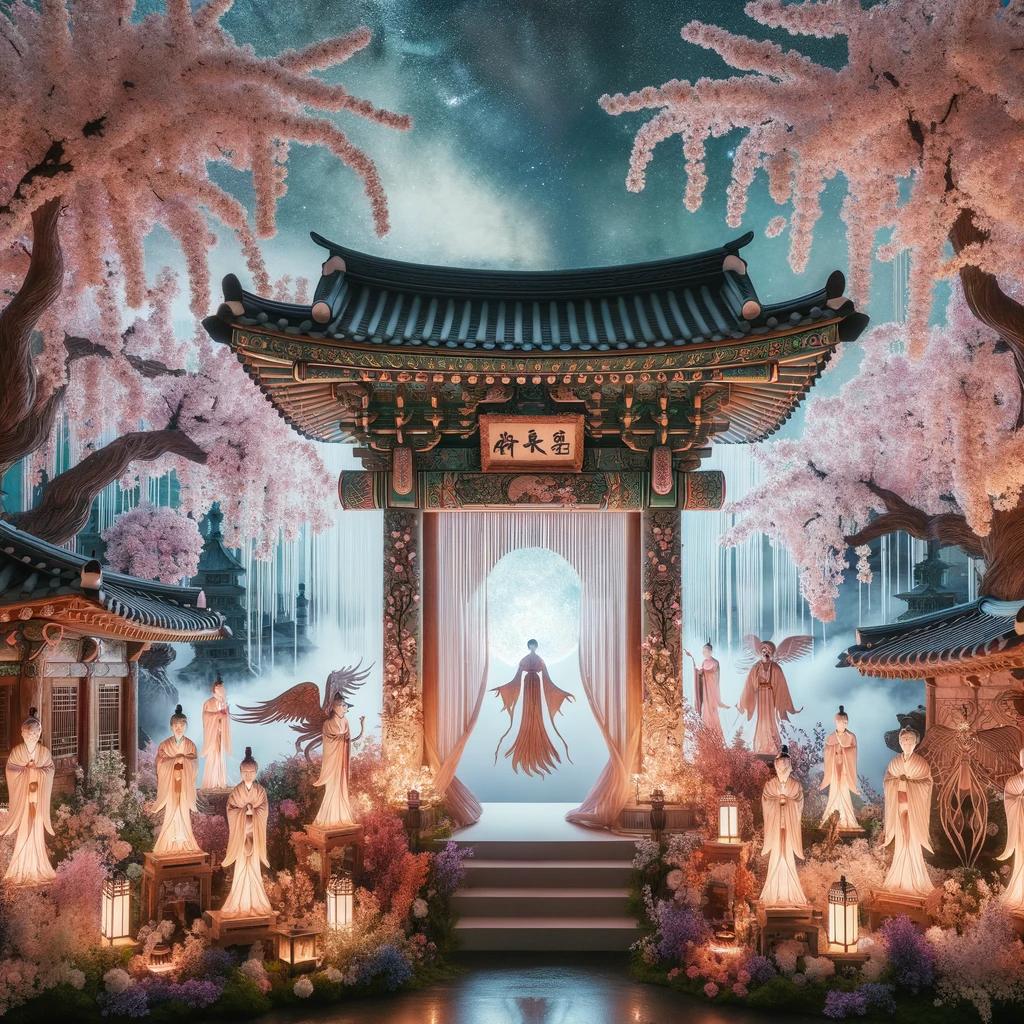The Enigmatic Gumiho: A Closer Look at Korea’s Supernatural Fox Spirit
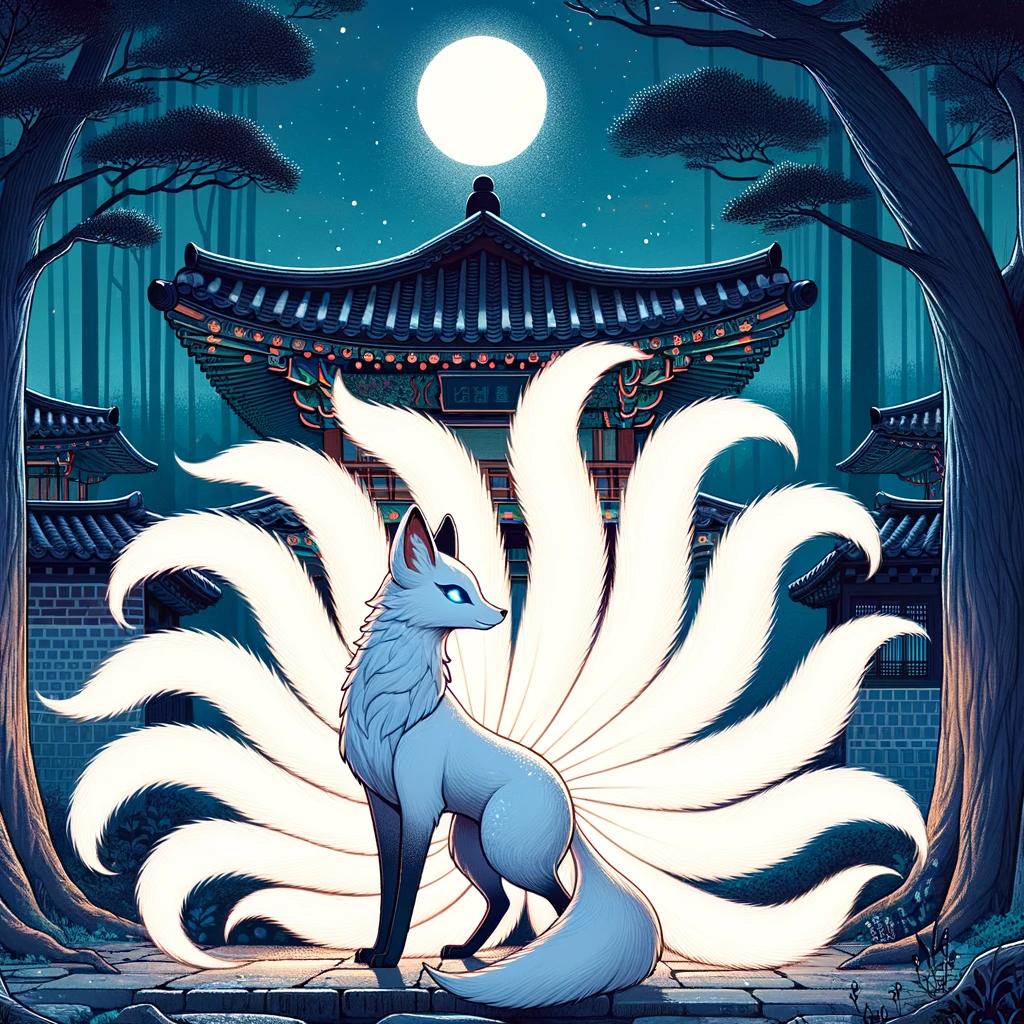
The Gumiho, a legendary creature in Korean mythology, is a fascinating figure with a rich cultural significance. Known as the Nine-Tailed Fox, this Korean fox spirit possesses the ability to transform into a beautiful woman and is believed to have supernatural powers, deeply rooted in the myths of ancient East Asia.
Stories about the Gumiho vary, portraying it as both a malevolent creature and a misunderstood being seeking humanity. The Gumiho’s influence can be seen in various forms of media, from literature to films and video games, making it an enduring symbol of beauty and mystery in Korean culture.
The Origins of the Gumiho in Korean Mythology
The Gumiho, or the Nine-Tailed Fox, is a mythical creature deeply rooted in Korean mythology. Exploring its origins, variations, and cultural significance provides insight into this fascinating creature.
The Mythical Nine-Tailed Fox
In Korean folklore, the Gumiho is often portrayed as a supernatural being resembling a fox with nine tails, a figure that has also been compared to the Japanese Kitsune and the Chinese fox spirits.
It possesses immense power and intelligence, symbolizing both beauty and danger. Legends surrounding the Nine-Tailed Fox originated from ancient Chinese fox mythology, which later influenced Korean culture.
Variations and Interpretations of the Gumiho
The Gumiho’s portrayal varies in different Korean legends and stories.
While some depict it as a malevolent creature preying on humans, others present a more complex character, driven by its desire for humanity. These variations reflect the diverse interpretations and perspectives of the Gumiho in Korean mythology.
Cultural Significance of the Gumiho in Korean Folklore
The Gumiho holds great cultural significance in Korean folklore. It serves as a symbol of mystery, allure, and transformation. The tales of the Gumiho often convey moral lessons and warn against the consequences of succumbing to temptation.
Its presence in Korean folklore highlights the deep connection between mythology and the cultural values of the Korean people.
Characteristics and Abilities of the Gumiho
The Gumiho possesses unique characteristics and abilities that make it a mesmerizing creature in Korean mythology.
Shape-Shifting and Seduction
One of the most intriguing traits of the Gumiho is its ability to shape-shift into a beautiful woman. This transformation allows the Gumiho to seduce unsuspecting men, often with the intention of consuming their vital organs.
Legends speak of the Gumiho using its seductive powers to lure men into its enchanting trap, a narrative that mirrors the tales of the Japanese Kitsune.
Supernatural Powers and Abilities
The Gumiho can manipulate its surroundings, conjure illusions, and even control the elements.
These extraordinary powers contribute to the allure and fear surrounding this mythical creature.
The Fox Bead and Its Significance
The Gumiho is often associated with the mystical Fox Bead, which holds great significance in Korean mythology. This bead, also known as the Yeowu Guseul, is said to contain immense power and energy.
It is believed that possessing the Fox Bead grants the Gumiho enhanced abilities and control over its transformations. The Fox Bead symbolizes the essence and spirituality of the Gumiho, adding a layer of mysticism to its existence.
Legends and Stories Surrounding the Gumiho
The Gumiho, a mystical creature from Korean mythology, also known as the nine-tailed fox, has captivated people with its fascinating tales and legends. These stories explore different facets of the Gumiho’s nature and its interactions with humans, often highlighting its complex character.
Tales of Revenge and Justice
One prevalent theme in Gumiho legends is the creature’s desire for revenge against those who have wronged it or caused harm to innocent beings. These stories depict the Gumiho as a formidable force seeking justice for past injustices, portraying the creature as both a symbol of vengeance and a protector of the vulnerable.
The Gumiho’s Desire for Humanity
Contrasting with its vengeful nature, some legends depict the Gumiho as a creature longing to become human. These stories explore themes of longing, forbidden love, and the struggle to suppress its inherently monstrous nature.
The Gumiho’s desire for humanity and the challenges it faces in pursuit of this desire create a compelling narrative filled with tragedy and inner conflict.
Gumiho in Modern Pop Culture
The influence of the Gumiho extends beyond ancient legends and has permeated modern pop culture. From literature to films and dramas, the creature has become a source of inspiration for artists and storytellers.
Its allure and enigmatic nature continue to captivate audiences, leading to the creation of mesmerizing narratives and characters rooted in Gumiho mythology.
With its tales of revenge, longing, and its presence in modern pop culture, the legends and stories surrounding the Gumiho offer a window into the rich tapestry of Korean mythology and its enduring impact on contemporary storytelling.
Influence of the Gumiho in Korean Culture
The Gumiho, with its captivating allure and mythical status, has left a significant impact on Korean culture. It is often depicted and referenced in various art forms, literature, films, dramas, and even video games, reflecting its widespread influence and the deep fascination it holds.
Literature and Art Inspired by the Gumiho
The Gumiho has inspired numerous literary works and artistic creations in Korea. Its character, stories, and symbolism have been explored in novels, poetry, and traditional paintings. Artists have depicted the mesmerizing beauty of the Gumiho and its transformative powers, showcasing the allure and danger associated with this mythical creature.
The tales of the Gumiho have also been a muse for writers looking to explore themes of love, desire, and the boundaries of humanity.
Gumiho in Films and Dramas
The allure and mystique of the Gumiho have translated onto the big screen and television dramas. Korean cinema and television have brought to life the intricate stories surrounding the Gumiho, attracting audiences with its blend of fantasy, romance, and drama.
From traditional adaptations to modern interpretations, filmmakers and scriptwriters have delved into the complex nature of the Gumiho, showcasing its struggle for acceptance and exploring themes of redemption, revenge, and love.
Gumiho in Video Games and Other Media
With the rise of digital media, the influence of the Gumiho has extended to the realm of video games and other forms of entertainment. Video game developers have created characters inspired by this mythical creature, incorporating its unique powers and abilities into their gameplay.
The Gumiho’s mystique has also extended to other media, such as webcomics, animations, and merchandise, attracting fans who are intrigued by its magical allure and captivating stories.
- Literature and art have explored the Gumiho’s character, stories, and symbolism.
- Korean cinema and dramas have brought the Gumiho to life on screen.
- Video games and other media have incorporated the Gumiho’s powers and mystique.
Through its portrayal in various artistic mediums, the Gumiho continues to captivate audiences, contributing to the enchantment and allure of Korean culture.
Its presence in literature, films, dramas, and video games further solidifies its status as a timeless and mesmerizing figure in Korean mythology.
Misconceptions and Theories about the Gumiho
Misunderstandings and theories surround the mythical creature known as the Gumiho in Korean folklore. Here, we explore different interpretations across East Asian mythologies, similar creatures found in other cultures, and the debunking of stereotypes to gain a better understanding of the true nature of the Gumiho.
Different Interpretations Across East Asian Mythologies
The Gumiho, also known as the Nine-Tailed Fox, shares similarities with similar creatures in other East Asian mythologies. In Japan, it is known as the Kitsune, while in China, it is called the Huli Jing.
Although their characteristics and stories may differ, the theme of a shape-shifting fox with supernatural abilities remains present. The Nine-Tailed Fox Korean interpretations often highlight these mythical foxes’ powers and the cultural significance that comes with their portrayal.
Similar Creatures in Other Cultures
Mythologies around the world have their own versions of supernatural creatures similar to the Gumiho. In European folklore, the fox often represents cunning or trickery, while in Native American legends, the coyote embodies similar traits.
These creatures may not have the exact characteristics of the Gumiho, but they share a common thread of a mischievous and intelligent being with shape-shifting abilities.
Debunking Stereotypes and Understanding the True Nature of the Gumiho
Many misconceptions surround the Gumiho, often portraying it as a sinister and malevolent creature.
However, it is essential to understand the nuanced nature of the Gumiho. While some stories depict it as vengeful or dangerous, others paint a picture of a misunderstood being longing for humanity.
By exploring its various legends and interpretations, we can appreciate the complexity and depth of this mythical creature in Korean folklore.
The Legacy of the Gumiho in Korean Mythology
The Gumiho holds a profound and enduring fascination within Korean mythology. Its presence has left an indelible mark on Korean culture, inspiring various forms of preservation, celebration, and artistic representation.
Enduring Fascination with the Gumiho
The Gumiho’s allure and mystique have captivated generations of Koreans, fostering an enduring fascination with this mythical creature. Its dual nature as a seductive yet dangerous being has continued to intrigue and captivate the imaginations of both young and old.
Preservation and Celebration of Korean Folklore
Korean folklore and mythology, including the tales of the Gumiho, hold immense cultural significance. Efforts have been made to preserve and celebrate this rich heritage, ensuring that future generations can appreciate and understand the depth of Korean folklore’s contributions to their cultural identity.
- Annual festivals and events showcase traditional performances that depict Gumiho legends, reinforcing the importance of these stories in Korean culture.
- Efforts to document and record oral traditions related to the Gumiho ensure their preservation for future generations.
- Scholars and researchers delve into the intricacies of Gumiho mythology, shedding light on its historical and cultural significance.
The Gumiho as a Symbol of Beauty and Mystery in Korean Culture
The Gumiho’s portrayal as a creature of beauty and mystery has had a profound impact on Korean culture’s perception of femininity and the supernatural.
It has become an iconic symbol, representing both the allure and danger that lies within the enigmatic world of Korean mythology.
- Artistic representations of the Gumiho in paintings and sculptures highlight its alluring and seductive nature.
- Literary works and poems draw inspiration from the Gumiho, weaving its essence into the fabric of Korean literature.
- Its presence in modern popular culture, such as films, dramas, and video games, reflects the enduring fascination with this captivating creature.
In conclusion, the Gumiho’s legacy in Korean mythology is far-reaching, encompassing enduring fascination, efforts to preserve and celebrate folklore, and its symbolization of beauty and mystery.
Its influence continues to shape and inspire Korean culture, solidifying its place as an integral part of the nation’s rich mythological tapestry.












